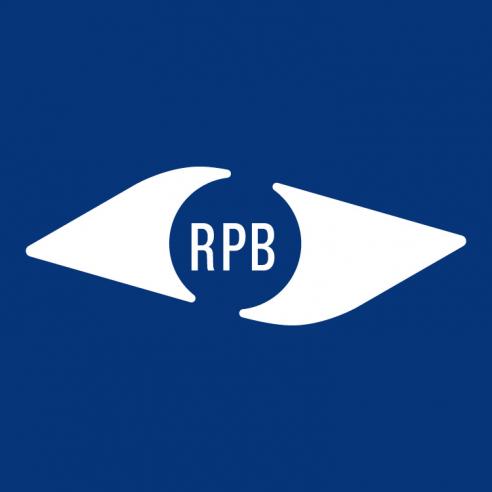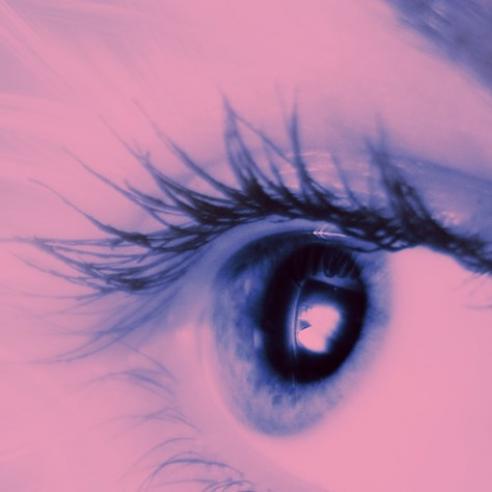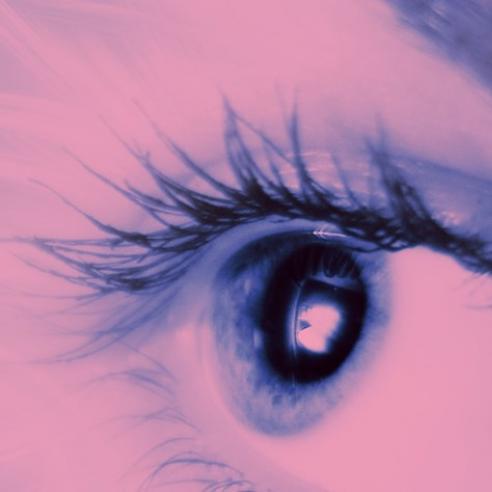AMD: Retraining the Eye
[Note: this is an older, but still potentially useful, article from the RPB archives.]
Janet P. Szlyk, Ph.D.
Associate Professor
Department of Ophthalmology & Visual Sciences
University of Illinois at Chicago College of Medicine
Rehabilitation Research Career Scientist,
Chicago VA Health Care System/West Side Division
Associates: William Seiple, Ph.D., Jennifer Paliga, B.S., Thasarat Vajaranant, M.D., Marek Mori, M.S., Mahnaz Shahidi, Ph.D., Pal Kilbride, Ph.D., Timothy McMahon, O.D., Jose S. Pulido, M.D., M.S., Norman P. Blair, M.D., Gerald Fishman, M.D.
SUMMARY
The Low Vision Research Laboratory of UIC and the Chicago VA Health Care System is composed of researchers with backgrounds in biology, electrophysiology, psychology, biophysics, computer science, optometry, ophthalmology, and psychophysics. The efforts of the laboratory are directed by myself along with Dr. William Seiple, Professor of Ophthalmology, New York University and Visiting Professor, University of Illinois at Chicago. Because of the expanding number of patients with agerelated macular degeneration, a disease that results in the progressive loss of central vision, we are developing and testing new methods of vision rehabilitation. From our previous clinical work, we found that many younger patients with juvenile-onset macular degenerations fared well by adopting eccentric viewing strategies, where they were able to take advantage of peripheral islands of good vision once the fovea was lost to disease. In reviewing the literature on eccentric viewing training, we found that the methods of determining the "surrogate" locations were not well defined and that there were no formal outcomes studies that objectively measured the effectiveness of these techniques. We felt that there could be considerable benefit to many patients, if we could enhance this 'natural' intervention technique by developing and utilizing new tools for identifying viable areas for retraining, and then by holding our methods up to scientific scrutiny by measuring outcomes.
SIGNIFICANCE
It is estimated that one in three individuals over 75 years of age, and one in thirty individuals over 52 years of age are affected by AMD1. These numbers should startle us into action. Given the increases in the aging population, AMD is considered an epidemic that is expected to worsen during the next decade2. Although there are some treatments to prevent the progression of the disease including laser photocoagulation, photodynamic therapy, and zinc and antioxidant therapy, there are presently no cures. In addition, advances are being made in the area of retinal cell transplantation, gene therapy, and retinal prosthetics. However, even when these techniques become part of standard clinical care, it is likely that the patients will require vision rehabilitation techniques to help them make sense of their potentially fragmented percepts, and to optimize their vision by selecting the best areas of the retina with which to view the world. Our research offers an advance in providing a tool to evaluate local visual function with applications not only for identifying the best alternative viewing locations for vision rehabilitation training, but also for enabling closer monitoring of potential localized changes in visual function that occur with treatment or with the progression of the disease.
BACKGROUND
The visual acuity deficits associated with AMD can be especially debilitating. Good central visual acuity is critically important in performing everyday activities such as reading, conducting personal correspondence, and recognizing faces and expressions3–7. Loss of acuity due to AMD also limits one's personal mobility because driving an automobile becomes extremely difficult with reduced central vision8–12. Additionally, alternative transportation modes can be hindered by an inability to read important information, such as train schedules or bus stop signs. Perhaps more importantly, individuals with poor central vision may lose self-esteem and be depressed about their inability to function normally in everyday life13. Therefore, rehabilitation of individuals with central visual impairment is a critical social and public health issue.
Currently, there are rehabilitation programs that attempt to train individuals with central vision loss to use eccentric fixation for reading. These fixation loci may be regions of "healthy" retina within the diseased central retina or, alternatively, may be areas of peripheral retina bordering on diseased regions. For many patients, being trained to make use of these intact retinal areas will re-establish visual autonomy. Although reading rehabilitation programs have had some success, it appears that reading rates using extrafoveal fixation loci never approach those that the individual had prior to the disease14–19. We believe that these limitations may be due to the manner in which alternative reading loci are chosen.
When a patient is confronted with decreasing central acuity due to AMD, what are his or her possible compensation strategies? Initially, with minor decreases in visual acuity, the fovea will continue to be used as the preferred retinal locus. This may be due to the fact that better acuity and more accurate scanning may be gained by using a diseased fovea than by relocating fixation to the areas outside of the fovea20. As central acuity becomes progressively poorer, an alternative parafoveal locus for fixation may be chosen because it provides better acuity than the diseased fovea.
There have been a few studies that have attempted to measure visual acuity at multiple discrete locations. These studies21–24 have employed scanning laser ophthalmoscopes (SLOs). SLOs allow the experimenter to view the fundus and place a target at a discrete location. Timberlake et al.24 presented static acuity letters through the SLO to map retinal positions of scotomas and fixation areas; however, the smallest stroke width used to produce letters in these studies was 7 minarc (the smallest letter size available was greater than a 20/100 Snellen equivalent optotype). Culham et al.25, Guez et al.26, LeGargasson et al.27, and Fletcher and Schuchard28 also measured acuity using SLOs, but again relatively large letter sizes were employed and only one or a few loci were examined. The limitation of the SLO technology is that the test targets that are obtainable are too large to precisely map out useful islands of vision, and the targets appear to the patient as red and flickering. These aspects of the technology make the SLO less optimal for use with low vision patients.
TECHNIQUES
Up to this point, we have completed two phases of this research. Phase One has involved the development of the tools and Phase Two has involved the validation of these techniques. In Phase One, we have developed the instrumentation to measure visual acuity at 27 locations across the retina. Since 1862, when Herman Snellen introduced the eye chart to measure visual acuity29, one's visual resolution abilities have been tested in the clinic by scanning lines of stationary letters. Patients are given one measure of their visual acuity (e.g., 20/40 where the patient sees at 20 feet what the normative group is able to resolve at 40 feet), for each eye, which often corresponds to their foveal vision. Our functional fundus imaging system (FFIS), projects simple letter optotypes randomly to each of the 27 locations over the course of the test session, until a threshold, or minimum size resolvable at that location, is measured. In this way, we have been able to produce a map of visual acuity across the retina, and patients are given 27 scores for each eye instead of just one. Examples of our maps for a normally-sighted control subject and a patient with AMD are shown in Figures 1a and 1b, respectively. The control subject has the best vision measured at the fovea (20/16), with vision dropping off to 20/49 at locations 3° to the left or right of the fovea. The patient has better areas of vision measured at 3° to the left (20/33) and right (20/49) of the fovea. We used the FFIS map, along with the results of a multi-focal electroretinogram (mfERG)30 that measures the electrical response from 103 locations across the retina and provides information about physiologic integrity within retinal layers, to hone in on the best location for eccentric viewing training.
STATISTICS
In Phase Two, to test the validity of our technique for location selection, we compared the outcomes of eccentric viewing training for two groups of patients (N=15). One group was trained to use a location that was selected by one of our colleagues, Timothy McMahon, OD, who is a highly skilled and seasoned low vision optometrist, based on traditionally used clinical criteria including visual field maps (measures of thresholds for brightness levels at discrete areas of the retina), fundus photographs (pictures of the retina), and chart-measured visual acuity. The other group was trained to use a location that was chosen based on our FFIS results and the mfERG. When the outcomes of the two groups were compared, both groups showed improvement with training, and, overall, we found that there were no statistically significant differences between the two groups. In Phase Three, we will better focus our training techniques and evaluate changes in the brain that may occur with vision rehabilitation using functional magnetic resonance imaging (fMRI) brain scanning technology. Preliminary fMRI data suggest that patients with AMD recruit alternate networks compared to pathways used by normally sighted individuals to compensate and perform tasks such as tracking a moving target when faced with compromised input due to the sensory disease. Using fMRI, we will be able to view the effects training may have on the brain.
HUMAN INTEREST
As the baby boomers age, and approximately 30% of this group experiences macular degeneration, we will be faced with a world health crisis. As Congress decides on Medicare Bill (H.R. 2484) this Fall of 2002 whether or not to expand coverage of vision rehabilitation services, we in the scientific community are working to design better technologies and techniques to provide patients with more effective programs to help them see better. Our patients are faced with their individual crises of losing their vision, and with it the ability to resolve print after being life-long readers, or to detect the expression on a loved one's face. Our vision rehabilitation program is designed around first identifying the best 'surrogate' retinal locations to train, and, then, secondly implementing scientifically based training strategies with outcomes that can be measured using objective tests such as fMRI. We are hoping that our approach may place all of us in a better position to meet the needs of an aging and visually compromised population.
Language: fovea — The very center of the retina where there is the highest density of cone photoreceptors. The area responsible for resolving fine detail.
This research is supported by grants from the Department of Veterans Affairs, Rehabilitation Research and Development Service, Washington, DC, and an unrestricted research grant from Research to Prevent Blindness, New York.
REFERENCES
(1) Klein R, Klein BEK, Jensen SC, et al. (1997). The five-year incidence and progression of age-related maculopathy: The Beaver Dam Eye Study. Ophthalmology, 104,7-21. (2) Evans J, Wormald R. (1996). Is the incidence of registrable age-related macular degeneration increasing? British Journal of Ophthalmology, 80,9-14. (3) Szlyk JP, Fishman GA, Alexander KR, Revelins BI, Derlacki DJ, Anderson RJ. (1997). Relationship between difficulty in performing daily activities and clinical measures of visual function in patients with retinitis pigmentosa. Archives of Ophthalmology, 115:53-59. (4) Szlyk JP, Fishman GA, Grover S, Revelins BI, Derlacki DJ. (1998). Difficulty in performing everyday activities in patients with juvenile macular dystrophies: comparison with patients with retinitis pigmentosa. British Journal of Ophthalmology, 82:13721376. (5) Hart PM, Chakravarthy U, Stevenson MR, Jamison JQ. (1999). A vision specific functional index for use in patients with age-related macular degeneration. British Journal of Ophthalmology, 83:10,11151120. (6) Mangione CM, Gutierrez PR, Lowe G, Orav EJ, Seddon JM. (1999). Influence of age-related maculopathy on visual functioning and health-related quality of life. American Journal of Ophthalmology, 128:1, 4553. (7) McClure ME, Hart PM, Jackson AJ, Stevenson MR, Shakravarthy U. (2000). Macular degeneration: do conventional measurements of impaired visual function equate with visual disability? British Journal of Ophthalmology, 84:3, 244-250. (8) Szlyk JP, Seiple W, Laderman DJ, Kelsch R, Stelmack J, and McMahon T. (2000). Measuring the effectiveness of bioptic telescopes for patients with central vision loss. Journal of Rehabilitation Research and Development, 37:101-108. (9) Szlyk JP, Fishman GA, Severing K, Alexander KR, Viana M. (1993). Evaluation of driving performance in patients with juvenile macular dystrophies. Archives of Ophthalmology, 111:207-212. (10) Szlyk JP, Pizzimenti CE, Fishman GA, Kelsch R, Wetzel LC, Kagan S, Ho K. (1995). A comparison of driving in older subjects with and without age-related macular degeneration. Archives of Ophthalmology, 113:1033-1040. (11) Szlyk JP, Seiple W, Viana M. (1995). Relative effects of age and compromised vision on driving performance. Human Factors, 37:430-436. (12) Williams RA, Brody BL, Thomas RG, Kaplan RN, Brown SI. (1998). The psychosocial impact of macular degeneration. Archives of Ophthalmology, 116:514-520. (13) Szlyk JP, Becker JE, Fishman GA, Seiple W. (2000). Psychological profiles of patients with central vision loss. Journal of Visual Impairment and Blindness, 94: 781-786. (14) Rayner K, Burtera JH. (1979). Reading without a fovea. Science, 206:468-469. (15) Nilsson UL, Nilsson SEG. (1986). Rehabilitation of the visually handicapped with advanced macular degeneration. Documenta Ophthalmologica, 62:345-367. (16) Knobloch K, Arditi A, Szlyk JP. (1991). Effects of chromatic and luminance contrast on reading. Journal of the Optical Society of America, A, 8:428-439. (17) Legge GE. (1991). Glenn A. Fry Award Lecture 1990: Three perspectives on low vision reading. Optometry and Visual Science, 68:763769. (18) McMahon TT, Hansen M, Stelmack J, Oliver P, Viana M. (1993). Saccadic eye movements as a measure of the effect of low vision rehabilitation on reading rate. Optometry and Vision Research, 70:506-510. (19) Whittaker SG, Lovie-Kitchen J. (1993). Visual requirements for reading. Optometry and Vision Science, 70:54-65. (20) Watson GR, Schuchard R, Wyse E, De l'Aune W. (2000). The relationship of reading ability to scotoma and preferred retinal locus characteristics. Annual Meeting of the Rehabilitation Research and Development Service of the Department of Veterans Affairs, February, Washington, DC. (21) Mainster MA, Timberlake GT, Webb RH, Hughes GW. (1982). Scanning laser ophthalmoscopy. Clinical applications. Ophthalmology, 89:7, 852-857. (22) Timberlake GT, Mainster MA, Peli E, Augliere RA, Essock EA and Arend LE. (1986). Reading with a macular scotoma. I. Retinal location of scotoma and fixation area. Investigative Ophthalmology and Visual Science, 27:7, 1137-1147. (23) Ellingford A. (1994). The rodenstock scanning laser ophthalmoscope in clinical practice. Journal of Audiovisual Media in Medicine, 17:76-80. (24) Timberlake GT, Peli E, Essock EA, Augliere RA. (1987). Reading with a macular scotoma II. Retinal locus for scanning text. Investigative Ophthalmology and Visual Science, 28:8, 1268-1274. (25) Culham LE, Fitzke FW, Timberlake GT, Marshall J. (1992). Use of scrolled text in a scanning laser ophthalmoscope to assess reading performance at different retinal locations. Optometry and Physiological Optic, 12:281-286. (26) Guez JE, Gargasson JL, Rigaudiere F, O'Regan JK. (1993). Is there a systematic location for the pseudofovea in patients with central scotoma? Vision Research, 33:1271-1279. (27) Le Gargasson JF, Rigaudiere F, Guez JE, Gaudric A, Grall Y. (1994). Contribution of scanning laser ophthalmoscopy to the functional investigation of subjects with macular holes. Documenta Ophthalmologica, 86:3, 227-238. (28) Fletcher DC, Schuchard RA. (1997). Preferred retinal loci relationship to macular scotomas in a low-vision population. Ophthalmology, 104:4, 632-638. (29) Colenbrander A. (2001). The historical evolution of visual acuity measurement. Proceedings of the 2001 Cogan Society Meeting, San Francisco, CA. (30) Sutter EE, Tran D. (1992). The field topography of ERG components in man — I. The photopic luminance response. Vision Research, 32:433-436.
December 27, 2007
Related News: Macular Degeneration

Research to Prevent Blindness and Association of University Professors of Ophthalmology Announce 2025 Recipient of RPB David F. Weeks Award for Outstanding Vision Research
Maria Bartolomeo Grant, MD, is recognized for ground-breaking contributions to the field of vision research.

Research to Prevent Blindness and Association of University Professors of Ophthalmology Announce 2024 Recipient of RPB David F. Weeks Award for Outstanding Vision Research
Patricia Ann D’Amore, PhD, MBA, is recognized for ground-breaking contributions to the field of vision research.

Research to Prevent Blindness Marks $400 Million in Funding to Advance Eye Disease Research
RPB funds a new round of researchers and hits a milestone in supporting vision-related breakthroughs.

RPB Funding Helps Researchers Revive Light-Sensing Cells in Organ Donor Eyes
This ground-breaking research accomplishment will open new doors for research on neurodegenerative diseases like AMD.

Recording available: RPB webinar on Dry AMD and Geographic Atrophy
RPB grantees provide expert insight on geographic atrophy and dry AMD as part of the "Lunch & Learn" series.

Join Us for AMD Awareness Month
Join RPB and Apellis Pharmaceuticals for a virtual event on Feb. 25 to learn about cutting-edge research into geographic atrophy and dry AMD.
Subscribe
Get our email updates filled with the latest news from our researchers about preventing vision loss, treating eye disease and even restoring sight. Unsubscribe at any time. Under our privacy policy, we'll never share your contact information with a third party.
| General Info | Grants | News & Resources |



